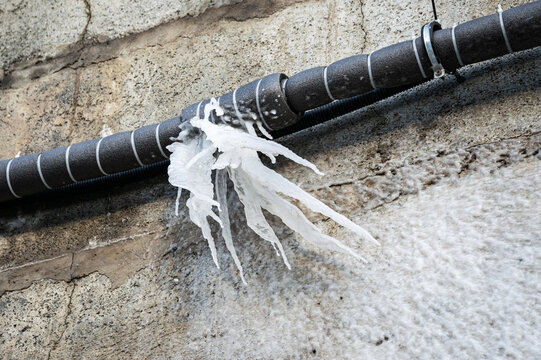Important Advice to Prevent Frozen Pipes in Cold Weather: Specialist Guidance
Important Advice to Prevent Frozen Pipes in Cold Weather: Specialist Guidance
Blog Article
Presented here on the next paragraphs yow will discover a lot of extremely good resources in relation to How To Avoid Freezing Pipes.

Winter can wreak havoc on your pipes, specifically by freezing pipelines. Right here's exactly how to avoid it from occurring and what to do if it does.
Intro
As temperature levels decline, the threat of icy pipelines boosts, potentially leading to expensive repairs and water damage. Understanding exactly how to prevent icy pipes is important for home owners in cool climates.
Recognizing Icy Pipes
What causes pipes to ice up?
Pipelines freeze when exposed to temperatures below 32 ° F (0 ° C) for expanded durations. As water inside the pipes ices up, it broadens, taxing the pipe walls and possibly causing them to burst.
Risks and damages
Icy pipes can bring about water disruptions, home damage, and expensive repair work. Ruptured pipelines can flood homes and trigger comprehensive architectural damage.
Signs of Frozen Piping
Recognizing icy pipelines early can prevent them from bursting.
How to recognize icy pipes
Look for reduced water circulation from taps, uncommon odors or noises from pipelines, and visible frost on revealed pipelines.
Prevention Tips
Protecting at risk pipelines
Cover pipelines in insulation sleeves or use warm tape to safeguard them from freezing temperatures. Concentrate on pipelines in unheated or external areas of the home.
Heating strategies
Keep indoor areas appropriately heated up, especially areas with pipes. Open up closet doors to allow warm air to flow around pipelines under sinks.
Safeguarding Outdoor Plumbing
Yard pipes and exterior taps
Separate and drain yard tubes before winter months. Mount frost-proof spigots or cover exterior faucets with insulated caps.
What to Do If Your Pipelines Freeze
Immediate actions to take
If you presume icy pipes, keep taps open to ease pressure as the ice thaws. Utilize a hairdryer or towels soaked in warm water to thaw pipelines gradually.
Long-Term Solutions
Architectural modifications
Consider rerouting pipes far from exterior walls or unheated areas. Add additional insulation to attics, cellars, and crawl spaces.
Updating insulation
Invest in high-grade insulation for pipes, attics, and wall surfaces. Correct insulation aids keep regular temperatures and minimizes the threat of frozen pipelines.
Conclusion
Avoiding icy pipes calls for positive procedures and fast actions. By recognizing the causes, indicators, and safety nets, house owners can shield their plumbing throughout winter.
6 Proven Ways to Prevent Frozen Pipes and Protect Your Home
Disconnect and Drain Garden Hoses
Before winter arrives, start by disconnecting your garden hoses and draining any remaining water. Close the shut-off valves that supply outdoor hose bibs and leave the outdoor faucet open to allow any residual water to drain. For extra protection, consider using faucet covers throughout the colder months. It’s also important to drain water from any sprinkler supply lines following the manufacturer’s directions.
Insulate Exposed Pipes
Insulating your pipes is an effective way to prevent freezing. Pipe insulation is readily available at home improvement stores and is relatively inexpensive. Pay close attention to pipes in unheated areas such as the attic, basement, crawl spaces, or garage. Apply foam insulation generously to create a buffer against the cold. You can also wrap your pipes in heat tape or thermostat-controlled heat cables for added warmth.
Seal Air Leaks
Inspect your home for any cracks or openings that could let in cold air. Seal any holes around the piping in interior or exterior walls, as well as the sill plates where your home rests on its foundation. Additionally, make sure to keep your garage door closed unless you’re entering or exiting. Leaving it open creates a significant air leak that can lead to frozen pipes.
Allow Warm Air Circulation
During cold snaps, it’s essential to allow warm air to circulate evenly throughout your home. Leave interior doors ajar to promote better airflow. Open kitchen and bathroom cabinets to help distribute heat consistently around the rooms. If you have small children or pets, be sure to remove any household chemicals or potentially harmful cleaners from open cabinets for safety.
Let Faucets Drip
A small trickle of water can make a big difference in preventing ice formation inside your pipes. When temperatures drop significantly, start a drip of water from all faucets served by exposed pipes. This continuous flow helps prevent the water from freezing. Additionally, running a few faucets slightly can relieve pressure inside the pipes, reducing the chances of a rupture if the water inside does freeze.
https://choateshvac.com/6-proven-ways-to-prevent-frozen-pipes-and-protect-your-home/

I'm very fascinated by How To Avoid Freezing Pipes and I'm hoping you appreciated my entry. Liked our piece of writing? Please quickly share it. Help someone else discover it. Thanks a lot for being here. Return soon.
Call Today Report this page